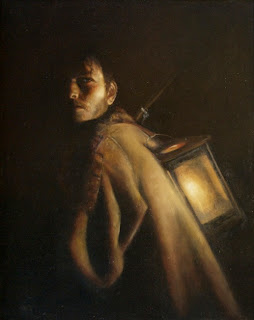


What is becoming trendy as an environmentally sustainable and “green” commodity nowadays, the Lahu tribe of Northern Thailand have known about and used for centuries. Bamboooooo!
To the Lahu, bamboo is a trusty old friend. Their daily life involves living intimately with it, depending on it for many practical daily uses. We could sense the deep respect that the Lahu people we stayed with on our village stay, had for this miraculous plant, which is very much a part of their cultural identity. Spending just three days with our guide Ja Ha and his family in the hill tribe villages, and we witnessed the multitude of ways that bamboo can be used, though it has been documented that there are actually a thousand known uses for it!
Va is the general Lahu word for bamboo, but there are dozens of other respective names given to bamboo determined by what the Lahu use it for. For instance, to refer to the bamboo used to cook rice when talking about the bamboo used to build a house would cause great amusement for a Lahu! The Lahu are so familiar with the many different species of bamboo that they employ, that most can identify the species of bamboo being cut down, simply by listening to the sound it makes. Incredible!
The Lahu village of Ban Yafu, where we stayed for 2 days, is the most beautiful, natural living environment I have ever seen. We came to the village by hiking up steep, arduous mountain, following our guide Ja Ha as he followed a trail that was either in his imagination, or marked by little plants that he recognized- I don’t know, but there was definitely NO PATH to be followed. When we arrived at the hill overlook above the small village, we stopped to just take it all in. Miles of lush green hills, not a power line or paved road in sight. And all the homes and buildings were constructed almost entirely of bamboo! The traditional Lahu home is built on stilts, and its floors and walls are bamboo with thatched roof. The steps or latter up to the first landing (or deck if you will) of the home are made of bamboo. We took our shoes off before entering the home, which is proper in Thai culture, and the light, springy bamboo floor boards under my feet felt amazing. We slept on blankets that night, that had been carefully laid out on the floor by our host family. The bamboo floor was so comfortable to sleep on! It felt like we were suspended in air all night!
After the end of each meal with Ja Ha and his family, Ja Ha would pour steaming herbal tea made of some smoky, earthy flavored leaves into cups he had carved out of a bamboo stalk. Looking around the village, we could see that the aqueducts and pipes were made entirely of bamboo. We also ate bamboo shoots with one of our meals. The best example of the Lahu’s efficient use of bamboo though, was one afternoon when Ja Ha led us up a steep mountain path, along with his 14 year old son and adorable little daughter, to the highest peak in the village. On the way up, Ja Ha stopped to cut down a couple bamboo stalks and when we got to the top he informed us that we would cook our lunch inside of the bamboo. He cut and hollowed out long pieces of the bamboo, then we stuffed them with rice, chili paste and vegetables and cooked them over the fire. I will never forget the smoky taste of that delicious meal.
On our hike out of Yafu village, at one point Ja Ha stopped to cut some bamboo to make us walking sticks. Then he amazed us by quickly carving a rough flute out of bamboo, and proceeded to play it, getting a good few notes out of the thing! It was fascinating and delightful to me to see the multitude of wonderful ways in which this nature abiding people incorporate bamboo into their daily lives. It gave me a greater appreciation for this important natural resource too!
Here are some interesting facts about BAMBOO
• An enduring, fast growing and truly renewable resource, it needs no replanting.
• A high-yielding, viable replacement for wood and petroleum based products.
• Important economic and ecological benefits including soil and water conservation, jobs, numerous product applications and food- more then 1000 documented uses.
• Amazingly short growth cycle, it can be harvested in 3-5 years versus 15-20, typical for many hardwoods.
• The fastest growing plant on the planet, some species can grow up to 1 meter or 3 feet per day.
• A critical element in the balance of oxygen and carbon dioxide in the atmosphere.
• A renewable alternative resource for agro-forestry production.
• Bamboo shoots provide a nutritional source of food which can be made into bread, cakes scones and cookies.
• Environmentally friendly reduction of pressure on forests through wood substitution.
• Products can be made in rural environments, reducing industrial and urbanization impacts.
Bamboo is durable, sturdy and strong - harder than Red Oak and Maple.



















































